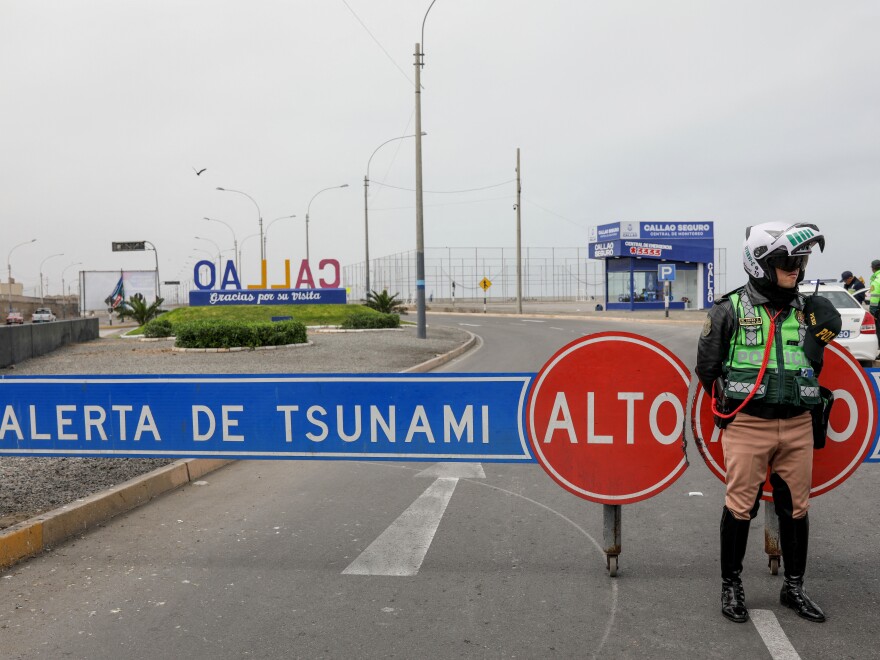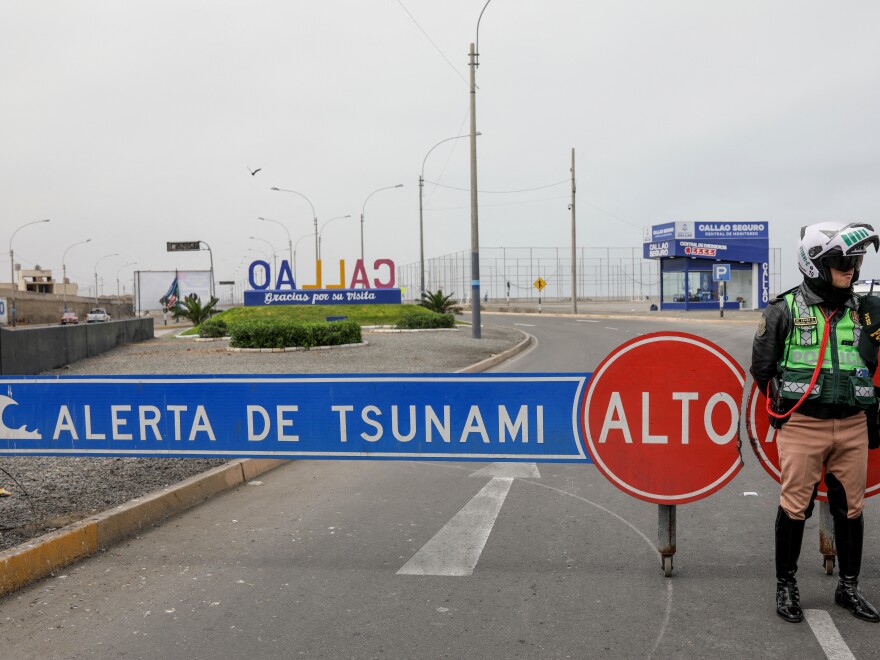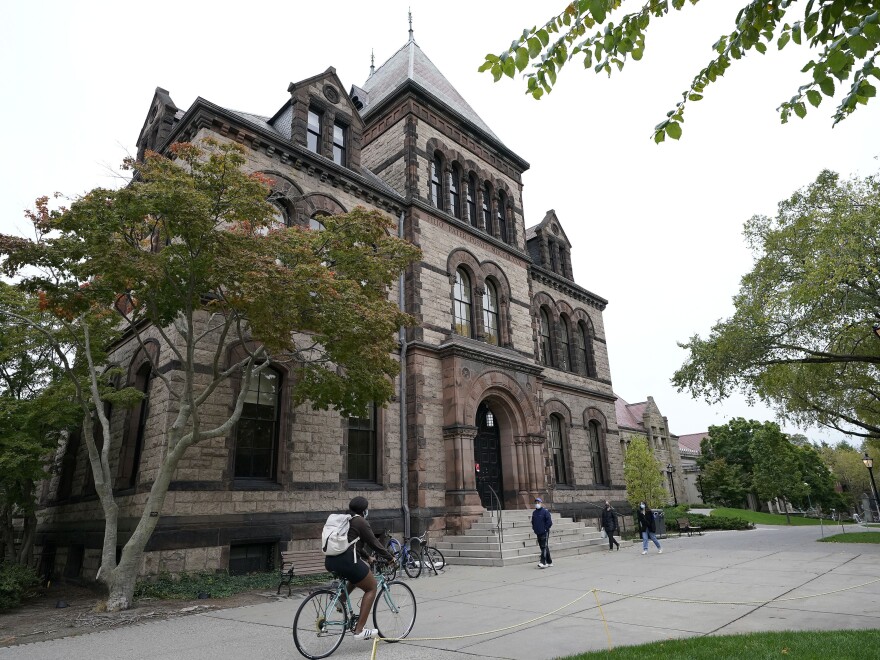Updated @ 2:35 PM EDT on July 30, 2025
A strong earthquake in eastern Russia on Wednesday caused tsunami waves to hit portions of Hawaii, Alaska, California, Washington, and Oregon.
According to U.S. Geological Survey statistics, an earthquake with a magnitude of 8.8 struck close to Russia’s sparsely inhabited Kamchatka Peninsula Wednesday morning local time, matching with two previous earthquakes to become the sixth-strongest ever recorded on Earth.
Russian state news agency Tass reports that Wednesday’s earthquake destroyed buildings, flooded ports, and injured multiple individuals. The Kremlin claims there were no casualties.
Many people were frantically evacuating throughout the Pacific overnight due to tsunami advisories and evacuation orders brought on by the earthquake.
Both Hawaii and Japan have seen tsunami waves as of Wednesday morning, although there has been no significant damage or casualties. Local authorities are cautioning citizens to exercise caution along the coastlines even after downgrading their notifications.
At an overnight press conference, James Barros, the administrator of the Hawaii Emergency Management Agency, said, “We went into this tsunami warning, we got out of the area, we were safe — let’s return back and be safe.” He urged people to check their structures and keep an eye out for floodwaters as they make their way back home.
The National Weather Service (NWS) reported that coastal regions in Alaska, California, Oregon, and Washington State awoke to tsunami warnings and increasing activity.
Because tsunamis are made up of waves that occur over several hours, officials are warning people to stay away from beaches, waterways, and coasts for the foreseeable future. They emphasize that the first wave might not be the biggest.
Although there is still a chance, officials say the United States appears to have avoided significant harm.
At approximately 11:30 a.m. ET, Homeland Security Secretary Kristi Noem informed reporters that the risk of a significant tsunami “has passed completely.”
By then, the final tsunami warning for parts of Northern California on the U.S. coast had been lowered to an atsunami advisory, which means that even though the waves are more than a foot high, substantial flooding is not anticipated. The Washington Emergency Management Division states that advisories can only be lifted after all waves have been below one foot for three hours.
Authorities are cautioning residents of Los Angeles County and the whole western coastline to stay inland and steer clear of hazardous currents even as the county’s beaches reopen.
“Whether an advisory is in effect or not, stay out of the water and harbors as currents will be strong,” the NWS adds.
U.S. West Coast saw heightened warnings and wave activity
Weather officials reported tidal surges around the U.S. West Coast even before sunrise.
The first tsunami wave struck San Francisco shortly after 1 a.m. local time, according to a tweet from the NWS Bay Area office. It said that in as little as 15 minutes, the region was witnessing tidal swings of 2 to 2.5 feet.
“This can create some seriously dangerous currents along beaches and harbors,” it stated. “It’s just a good idea to stay away from the water today!”
Around Monterey Bay in California, water levels fluctuated quickly by 1 to 2 feet, while Point Reyes recorded what the NWS referred to as the “highest tidal deviation yet:” 1.99 feet around 4 a.m. local time.
“This is more than 3 hours after the initial tsunami wave arrived,” it stated on Twitter. “Wait for the all clear, this is far from over.”
About 20 miles south of the Oregon border, Crescent City, California, was hit by 3.6-foot tsunami waves.
According to the Oregon Department of Emergency Management, waves as high as one to two feet may hit some areas of the state’s coastline.
In the meantime, “strong and unusual currents,” mostly around the outer Washington coast, are being warned of by the NWS Seattle office.
Around midnight, it recorded its first tsunami waves close to the coastal towns of La Push and Westport in Washington state. Three hours later, the NWS reported that waves were still coming ashore and across the Strait of Juan de Fuca, the small waterway that divides British Columbia’s Vancouver Island from Washington’s Olympic Peninsula.
As of Wednesday morning, there were also tsunami warnings in effect for portions of British Columbia’s coastline.
Beyond the mainland U.S., high alerts continue
Guam and many South Pacific island nations, such as Fiji, Tonga, and the Philippines, have withdrawn their tsunami warnings. However, new orders are being issued by other nations and regions.
With waves between 3.28 and 7.58 feet, Peru’s emergency center issued a warning for its Pacific coastline.
Residents of the Marquesas Islands archipelago are being warned by authorities in French Polynesia to prepare for waves as high as thirteen feet, according to Reuters.
Additionally, coastal Chile, a portion of Colombia, and Ecuador are under tsunami warnings. By 9 a.m. local time, the Galapagos Islands may experience a 4.6-foot wave, according to the Navy’s Oceanographic Institute.
According to the Associated Press, Mexico’s navy warns that waves of one to three and a half feet may hit its Pacific coast.
In Hawaii, the worst seems to be over
Overnight, Hawaiians prepared for the impact.
Cell phones were ringing with emergency notifications, and the streets were crowded with people attempting to drive inland. According to Gov. Josh Green, all flights into and out of Maui were canceled, leaving about 200 passengers stuck at the airport.
There was tsunami activity on the main Hawaiian islands, with waves as high as five feet and some coastal regions seeing minor inundation. However, there were no reported serious casualties or damage.
During one of several press appearances on Tuesday evening, Green stated, “We are very relieved that we have not yet witnessed a wave of consequences.”
Around 10:40 p.m. local time on Wednesday, the Pacific Tsunami Warning Center lowered Hawaii’s tsunami warning to an advisory, and evacuation orders were immediately revoked.
Overnight, Chip McCreery, the director of the center, expressed his confidence that “at least we’re past the worst part of it, we’re not going to see any impacts bigger than we’ve already seen.”
Strong currents might still be dangerous for swimmers and boats, according to officials, who are advising people to keep an eye out for any damage and record it, according to Hawaii Public Radio.
Millions were told to evacuate in Japan
State broadcaster NHK reports that although the Japan Meteorological Agency has withdrawn tsunami warnings for the majority of Japan, it continues to advise people to use caution when near rivers and coastal areas.
According to the report, at one point, 229 communities and over 2 million residents were advised to evacuate away from the coast and into higher ground.
According to the news agency, tsunami waves measuring 4.26 feet in Iwate prefecture and 2.62 feet in Hokkaido were recorded along Japan’s Pacific coast.
Strong tsunamis are nothing new to Japan. A 9.0 magnitude earthquake in March 2011 caused a tsunami that devastated the Fukushima Daiichi nuclear power facility and sent hazardous particles into the atmosphere, killing almost 20,000 people.
Concerns over Japan’s nuclear power facilities were also raised by the most recent tsunami, and all employees were evacuated from the Fukushima Daiichi and Fukushima Daini nuclear power reactors. According to a Wednesday morning tweet from the International Atomic Energy Agency, “initial reports indicate no safety impact for nuclear power plants along [the] Pacific coast.”
From Oahu, NPR’s Juliana Kim provided reporting.
Copyright 2025 NPR






